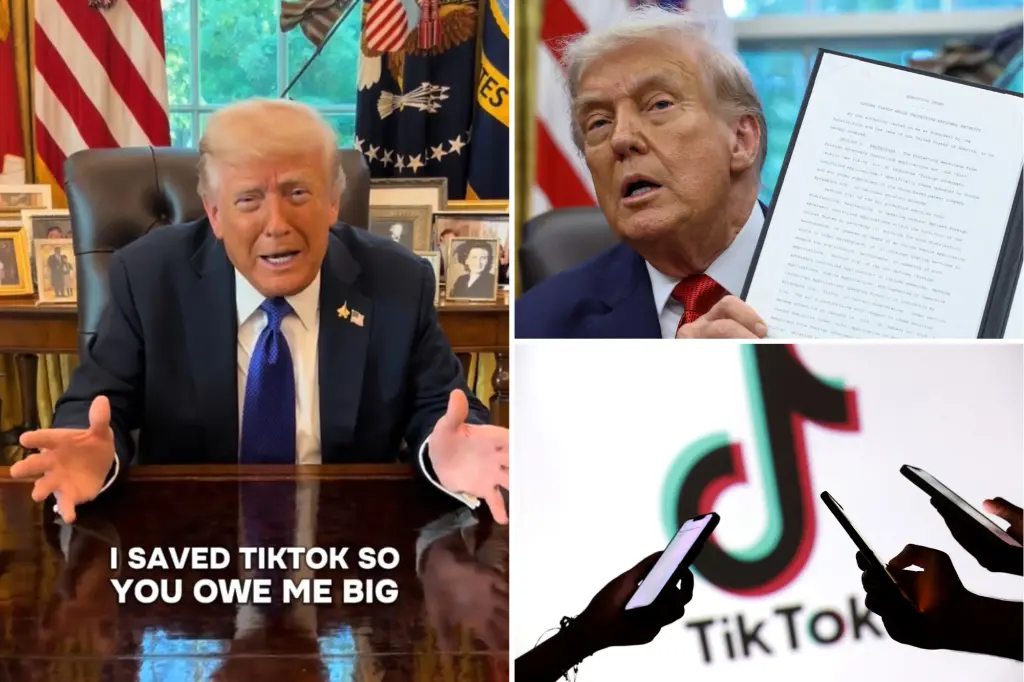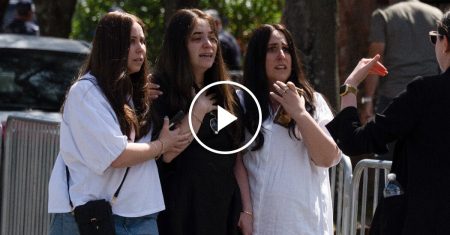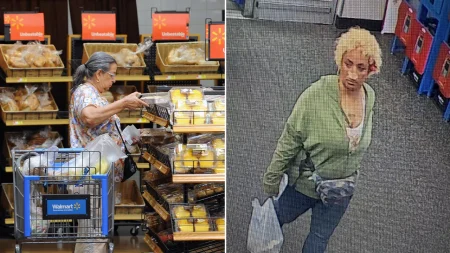Trump Returns to TikTok, Claiming Credit for Saving the Platform
In a move that surprised many, President Donald Trump has made his return to TikTok after a nearly year-long absence from the platform. Speaking directly to his Gen-Z followers, Trump declared they “owe me big” for his administration’s efforts to save the popular social media app from potential bans in the United States. Trump’s comeback video, filmed in the Oval Office, carried both a celebratory and inspirational tone as he addressed the young TikTok users: “To all of those young people of TikTok, I saved TikTok, so you owe me big.” The former president didn’t stop there, adding a motivational message about the future: “Now, you’re looking at me in the Oval Office, and someday one of you are gonna be sitting right at this desk, and you’re gonna be doing a great job also.” This direct appeal to younger voters represents a strategic pivot for Trump, who appears to be acknowledging the significant influence and voting power of Generation Z as the election approaches.
The Trump-TikTok saga has taken many twists and turns over the years. Initially, the platform faced serious threats of being banned during Trump’s first administration due to national security concerns related to its Chinese ownership. However, in a significant policy reversal, Trump recently signed an executive order supporting a proposed deal that would restructure TikTok’s ownership model to place it under U.S. control while keeping it accessible to American users. This change in approach reflects the political reality that TikTok has become deeply embedded in American culture, particularly among younger demographics. With over 170 million American users, the platform has evolved from a dance video app to a major information and entertainment hub that many users rely on daily. Trump’s decision to save rather than ban the app signals his recognition of its cultural significance and potential political value.
Vice President JD Vance has also rejoined the platform, further underscoring the administration’s embrace of TikTok. In his inaugural post, Vance expressed gratitude to Trump: “Glad to be back on TikTok thanks to President Trump! Follow along here for more updates from the White House, and maybe even some sombrero memes.” This reference to “sombrero memes” appears to be a lighthearted nod to past controversies, suggesting an attempt to connect with younger audiences through humor and self-awareness. The coordinated return of both Trump and Vance to the platform represents a strategic effort to meet younger voters where they are most active online. While details remain limited, their presence signals the beginning of what will likely be a concerted TikTok strategy heading into the election season, attempting to capitalize on the platform’s massive reach and engagement potential.
The proposed TikTok deal that Trump references in his video would fundamentally restructure how the app operates in the United States, though many specifics remain unclear. What we do know is that the arrangement would create a new venture that licenses ByteDance’s algorithm—the secret sauce that makes TikTok so addictively engaging to users. Tech giant Oracle has been confirmed as a partner in the U.S. investment consortium that would take ownership of the platform. Under this framework, Oracle would take on the critical role of auditing a copy of the algorithm and monitoring it for security purposes. This approach attempts to address the longstanding concerns about Chinese government influence over the platform while preserving the user experience that has made TikTok so popular. The deal aims to thread a difficult needle: maintaining TikTok’s functionality and appeal while addressing the legitimate national security concerns that have dogged the platform.
Perhaps most critically, the proposed arrangement explicitly addresses data security—a primary concern that motivated earlier attempts to ban the app. According to the framework, China would no longer have access to U.S. user data under the new agreement. This provision directly targets fears that the Chinese government could exploit TikTok to collect sensitive information on American citizens or shape political narratives through algorithmic manipulation. While technical and legal experts will undoubtedly scrutinize how this data separation will be implemented and enforced, the promise represents a significant concession to American security concerns. The deal appears to be designed as a compromise solution: allowing Americans to keep using a platform they love while establishing safeguards against potential foreign influence operations.
Trump’s return to TikTok represents more than just another social media appearance—it symbolizes a complex intersection of technology, politics, and international relations. By positioning himself as the platform’s savior rather than its executioner, Trump is attempting to transform what was once a liability into a political asset. The move acknowledges the reality that TikTok has become deeply intertwined with American youth culture, making an outright ban politically costly. Instead, the administration has pivoted to a solution that allows them to claim credit for addressing national security concerns while preserving access to a platform beloved by millions of potential voters. As the proposed deal moves forward and details emerge, both supporters and critics will be watching closely to see if this arrangement truly protects American interests while preserving TikTok’s unique appeal. What’s certain is that in an election increasingly focused on technology policy and youth engagement, Trump’s TikTok strategy represents a calculated gambit to meet younger voters on their preferred digital terrain.











